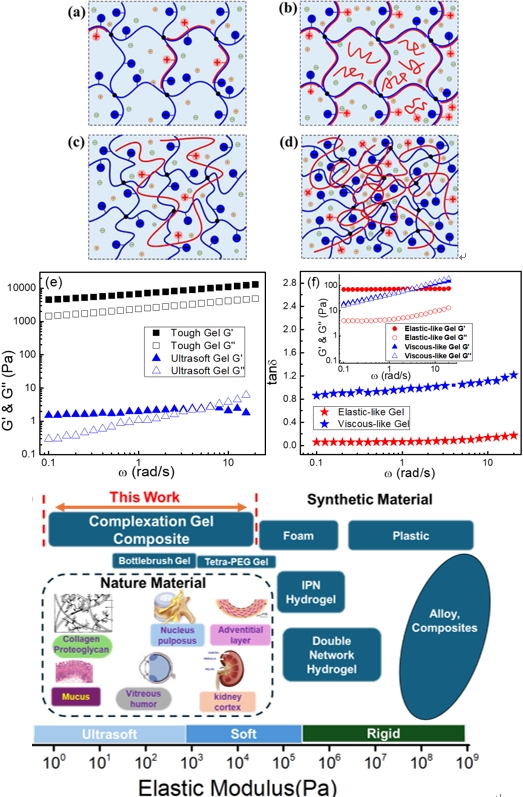Hydrogel composites can mimic various biomaterials such as vitreous humor, mucus, synovial membrane etc. Different materials need different elastic moduli and viscoelastic properties. Therefore, it is important yet challenging to quantitively tune their elastic modulus and viscoelastic properties by physical methods without changing the chemical components of the materials.
In a study published in Nature Communications, the research group led by Prof. JIA Di from the Institute of Chemistry of Chinese Academy of Sciences has designed a system defined as complexation gel composites, in which the guest positively charged chains complexed with negatively charged host gel matrix. The researchers tuned the correlated structures between the guest and host by utilizing the polymer physics of topologically frustrated dynamical state. Various topologically correlated structures can be obtained by tuning the physical parameters such as the ratio of mesh size of the host gel over the guest chain size, the molar charge ratio r, and the swelling methods. Based on different topologically correlated structures, the viscoelastic properties of the complexation gel composites can be quantitatively tuned in a broad range, varying from tough gel to ultrasoft gel, and from elastic-like gel with low damping properties to viscous-like gel with high damping properties. Therefore, a viscoelastic moduli map can be built up, which is applicable to many applications in the field of soft biomaterials and tissue engineering.
Moreover, the researchers have also proposed the concept of “Entropy-driven Topologically Isovolumetric Point”, where the gel volume does not change at swelling equilibrium for charged gel composites. Unlike traditional methods, here it offers a brand-new strategy to precisely tune the swelling ratio by changing the conformational entropy of the chains and topologically correlated structures between the guest and host in the charged hydrogel systems.
This work provide a new strategy to tune the viscoelastic properties by changing their correlated structures between the guest and the host by using entropy effect in a charged complexation hydrogel composite. It may also inspire scientists to use entropy effect to control other physical properties in charged polymer gel systems.

New strategy to quantitatively tune the elastic modulus and viscoelastic properties of charged hydrogels composites in the ultrasoft-soft region. (Image By Prof. JIA Di
Contact:
Prof. JIA Di
Institute of Chemistry, Chinese Academy of Sciences
Email: jiadi11@iccas.ac.cn